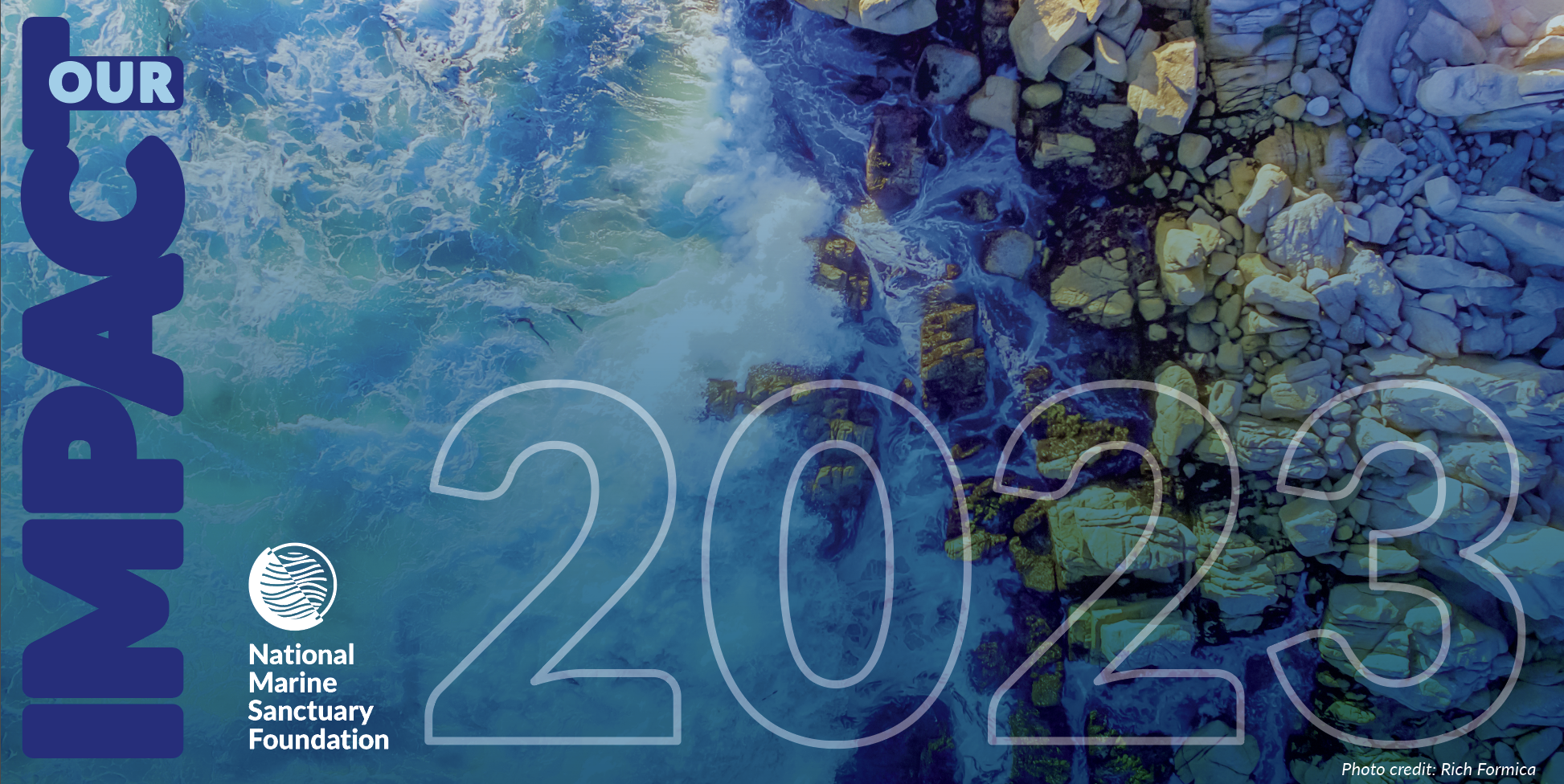

Message from President and CEO Joel R. Johnson
During my first days this summer as the new President and CEO of the National Marine Sanctuary Foundation, the Earth witnessed the hottest days in human-recorded history. What does this mean for our nation’s marine sanctuaries – home to so many special creatures like endangered whales, sea otters, manatees, and coral reefs? What does it mean for coastal communities who live, recreate, and are sustained by our waters?
Experts at Capitol Hill Ocean Week in June showed us that conditions in our ocean and Great Lakes are worsening, but that we still have time. The National Marine Sanctuary System, made up of 15 sanctuaries and two marine national monuments, can be sources for the solutions we need to secure the future of our waters and those who depend on them. These wild places, from kelp forests to meadows of seagrass to deep sea corals, are living laboratories. World-class scientific research, conservation and restoration practices, and cultural preservation take place every day in sanctuaries.
To meet the moment, the National Marine Sanctuary Foundation has provided more than $20 million of funding into sanctuaries this year to respond to marine heatwaves, remove large marine debris like derelict boats, disentangle whales from ghost nets, and educate thousands of young people and families to become stewards of their sanctuaries through STEM projects and outdoor recreation. With Foundation support, the 129-year old wreck of the Ironton was rediscovered this year in Thunder Bay National Marine Sanctuary, resting upright with its three masts still standing. On October 23, we created National Marine Sanctuary Day with Congress, so Americans can have an annual day to come together to be inspired and act on behalf of sanctuaries to protect our treasured waters.
The solutions that the National Marine Sanctuary Foundation is initiating range from designing and testing innovative fishing gear to reduce whale entanglements, promoting sustainable seafood and the blue economy, and supporting the first tribal-led sanctuary nomination for the proposed Chumash Heritage National Marine Sanctuary on the California coast.
This impact report shows the results of the remarkable partnershipbetween the National Marine Sanctuary Foundation, NOAA and the Office of National Marine Sanctuaries, and the entire sanctuary community, which includes you. We hope you’ll see your hopes and ambition for our sanctuaries reflected in the work we’ve done this year and that you’ll join us for what’s to come.
Sincerely,
Joel R. Johnson
President and CEO, National Marine Sanctuary Foundation
OUR IMPACT:
Emergency Response to Coral Reef Crisis
This year marked the hottest days on human record. In Florida Keys National Marine Sanctuary, water temperatures averaged ~89.5°F, with reports of spikes as high as ~91.5 °F during an unprecedented marine heatwave, resulting in coral bleaching events and widespread coral mortality.
The Foundation mobilized an emergency response with NOAA and coral restoration partners to support a multi-faceted approach for coral rescue and recovery at key reef sites and coral nurseries in Florida Keys.
Efforts are continuing to rescue at-risk corals, relocate them to land-based facilities or to deeper and cooler waters, and preserve endangered and threatened corals genetics that can seed future restoration. More than 12,000 corals have been rescued and relocated since the start of the marine heatwave.
Restoration, particularly on the scale of Mission: Iconic Reefs, is vital to rebuilding affected coral reefs. Additional support is needed to monitor and study reef responses, identify coral strongholds that were more resilient, and return rescued corals back onto the reef to aid recovery and guide future restoration efforts.

Photo credit: Jay Clue

12,000+
corals rescued and relocated by partners

5
in-the-water partners funded

10
coral nurseries part of the rescue effort

$967,705
facilitated through the Foundation to support partners
“We’re equipping ourselves to be smarter in the face of these climate threats and learning ways to improve and upscale our response and risk mitigation activities. We know our restoration work can succeed if we continually integrate these learning lessons into our greater restoration model. And that’s exactly what this current thermal event is allowing us to do – to become smarter and more intentional about how we prepare for and respond to these types of events in the future.”

MEGAN FRASER,
Restoration Economy Manager, National Marine Sanctuary Foundation
OUR IMPACT:
Saving Ocean Giants and Entanglement Response
Large whale entanglements in U.S. waters increased in recent years. On the West Coast, the majority of 2022 reported entanglements were in California with 12 reports in Monterey Bay area and 5 reports in the Santa Barbara/Los Angeles area.
The Foundation works in partnership with the National Large Whale Entanglement Response Network and our national marine sanctuaries to support rescue efforts across the nation. These emergency response operations require highly trained teams, specialized equipment and supplies, vessels that are platforms for this dangerous work, and strong, coordinated partnerships to be prepared and ready to respond while also ensuring safety and efficiency.
In 2023, the Foundation hosted responder training events in Monterey Bay and Channel Islands National Marine Sanctuaries to prepare for the high season of emergency rescues, including experiencing on-water vessel operations, practicing valuable skills, and simulating real-world rescue scenarios to practice safety and reduce risk. The workshops engaged 92 responders across California to improve response and preparedness to rescue entangled whales.

Trained responder Grant Thompson throws a cutting grapple to gain access to the gear entangling a humpback whale.
Photo: Ed Lyman/NOAA under MMHSRP Permit # 18786-06

92
responders trained or engaged

5
whale rescue missions supported

6
research partners funded
“Thanks to the National Marine Sanctuary Foundation’s support, our team of trained responders had the opportunity to travel to Moss Landing and Santa Barbara for critical whale entanglement response trainings. These opportunities fostered essential in-person communication and skill development, ultimately contributing to whale welfare and conservation.”

KATHI GEORGE,
Director of Cetacean Conservation Biology at The Marine Mammal Center
OUR IMPACT:
New Sanctuary Designations and Protection
A sea change starts with a single ripple…a passion, an idea, an experience, a connection. National marine sanctuaries create connections between people and our ocean and Great Lakes. The National Marine Sanctuary Foundation works to create change that builds those connections.
Given the pressures on the ocean and Great Lakes, we are not adequately conserving key species, habitats, ecosystems, and cultural and maritime resources in U.S. waters. These gaps in the conservation of natural, maritime, and cultural resources need to be addressed, while also respecting tribal and Indigenous sovereignty, to protect biodiversity for sustaining a healthy ocean and all of us who rely on it.
In 2023, six new sanctuary designations are underway in communities from the Pacific Remote Islands to the Central California Coast to the New York Bight. The Foundation is working to mobilize advocates and engage more diverse communities in order to ensure everyone’s voice can be heard and see these national treasures protected and enjoyed for all Americans.
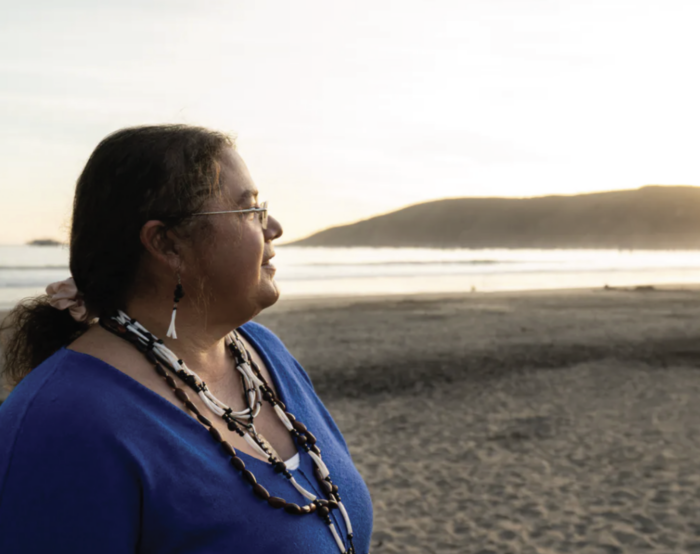
Northern Chumash Tribal Council Chairwoman Violet Sage Walker leads the push for designation of Chumash Heritage
National Marine Sanctuary begun by her father, the late Fred Collins. Photo Credit: Jeremy Bishop.
Protecting Indigenous cultural resources, tribal sovereignty, and ensuring that Indigenous Knowledge is centered in the designation and management of marine protected areas is an area of critical importance. Sanctuaries can be places to champion Indigenous co-stewardship of marine resources and make equity and justice-focused improvements to how we manage the ocean and the Great Lakes.
The Foundation’s work extends from the ocean floor to Capitol Hill. We play a key role in advocating for the expansion of the National Marine Sanctuary System, working hand-in-hand with community leaders to champion our protected waters. Together, we promote national awareness and local stewardship that leads to big differences for our ocean and Great Lakes.

780,981 SQUARE MILES
of proposed protections added—more than doubling the current area protected in the National Marine Sanctuary System
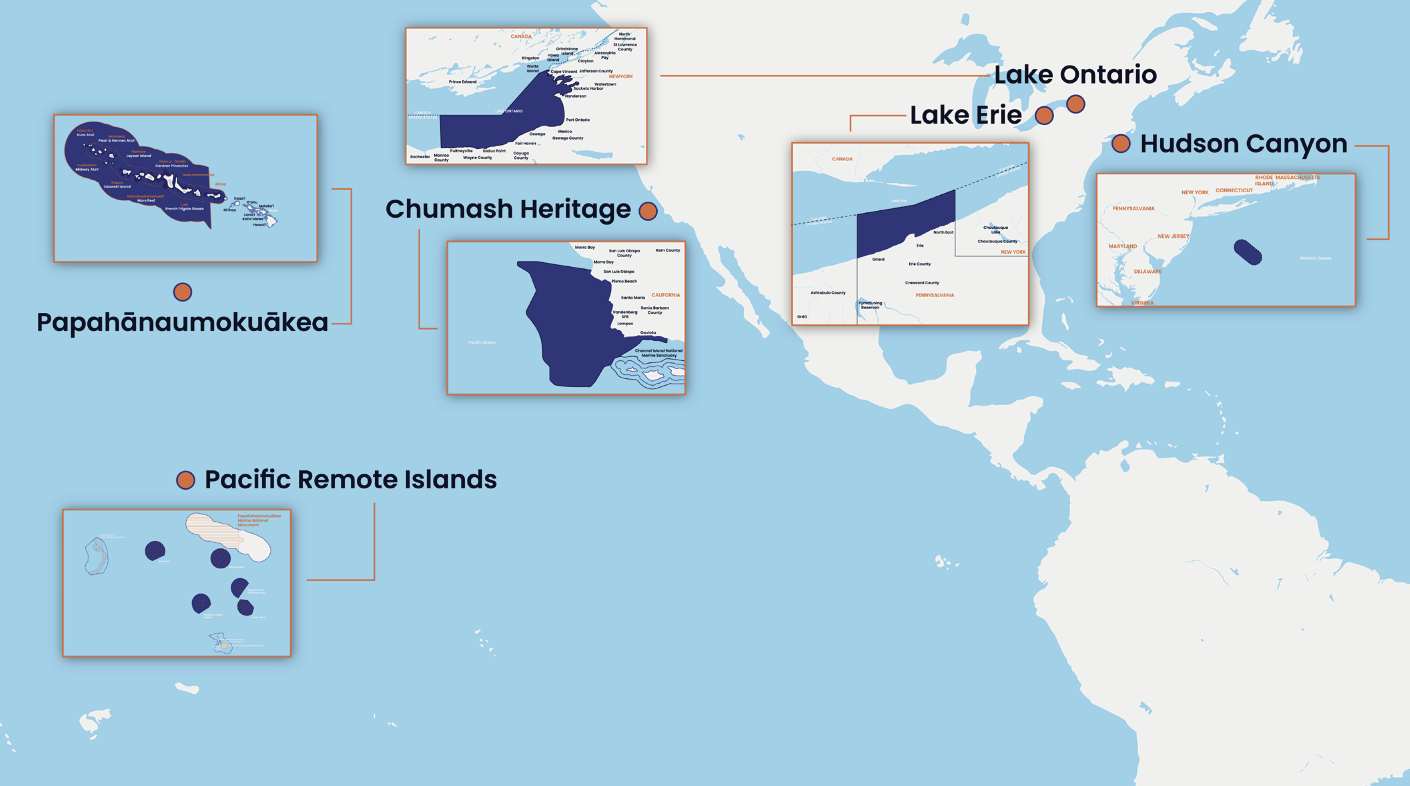
All proposed sanctuary boundaries are subject to change and not final until designated by NOAA.
“It always has to involve us having to make sure that we’re linking back to some knowledge, some experience, some past…so that we can take all of that to decide how best to deal with what’s before us. And then be the innovators and be able to think about what directions, what course we should take.”
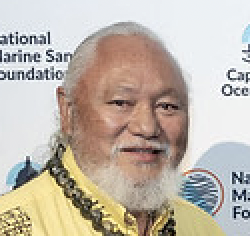
Solomon Pili Kahoʻohalahala,
Kupa ʻāina o Lānaʻi
“I have hope for the future…That’s a legacy that we owe. That’s a legacy that we fight for. It’s the soul of our planet. We are all fighting for the soul of our planet.”
William J. Ailā Jr.,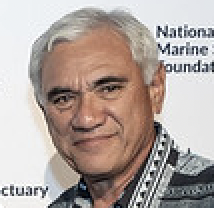
Former Director of the Hawai’I Department of Land and Natural Resources and former Chair of the Papahānaumokuākea Reserve Advisory Council
OUR IMPACT:
Marine Debris Removal
Every year, the National Marine Sanctuary Foundation and its partners remove tens of thousands of pounds of trash from our ocean and coasts to restore important habitats and ecosystems. We mobilize community networks across the country — forging innovative partnerships with dive businesses, tribal and Indigenous leaders, and commercial fishermen alike — towards this shared goal of clean seas. And with these partners, we clean up debris underwater and on remote shorelines that others cannot reach and we are tackling the large debris that others cannot.
In Florida Keys National Marine Sanctuary, Blue Star dive operators and volunteer certified divers removed 72,609 pounds of underwater marine debris and derelict and ghost fishing gear from target areas. The program helps boost the regional economy by working with the local tourism industry to restore marine habitats and ecosystems and conduct public outreach to prevent marine debris.
This year, the Foundation kicked off a multi-year campaign to remove hundreds of tons of large debris, such as abandoned and derelict vessels, a wrecked airplane, and derelict fishing gear across five national marine sanctuaries. This work requires highly coordinated teamwork, technical expertise, and community support to remove items that have been plaguing our ocean, in some cases, for decades. We are ready to work with NOAA and our on-the-ground partners to tackle the problem head-on and clean up these treasured waters.
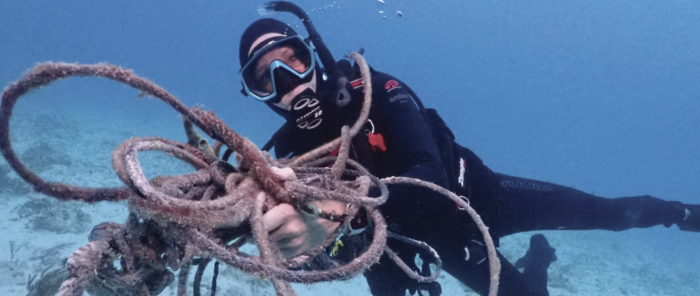
Photo credit: Dr. Peter Auster

72,609
pounds of trash and debris removed to date

5,464
professional and volunteer diver hours contributed

338
acres of habitat and shoreline cleaned up
“Removal of marine debris is important for many reasons. During significant weather events, large debris, such as traps, move and damage coral reefs. Monofilament ensnares marine life. Plastics are mistaken for food and ingested by numerous ocean critters. Lastly, who wants to see an ocean filled with trash?!”
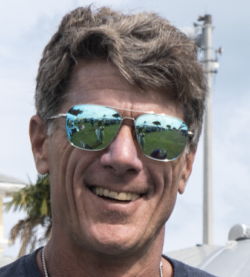
Mike Goldberg,
Owner, Key Dives and
Co-Founder, I.CARE
OUR IMPACT:
Equity and Education in Sanctuaries
The Foundation, in cooperation with NOAA Ocean Exploration, created Ocean Odyssey Grants to support education professionals working to chart the course for a more diverse, future ocean workforce. The small grants of up to $20,000 provide science, technology, engineering, and math (STEM) education and/or early career development opportunities for youth from communities historically marginalized from ocean science and exploration industries.
The first grantees have included a variety of high school teachers, non-profits, and universities across the country, with activities ranging from career day-style workshops to research internships to teacher trainings on how to implement marine science curriculum in the classroom.
The impact of the grants has extended far beyond dollars spent and numbers reached. Grantees have tracked student knowledge gains, STEM skills learned, and gains in student awareness of ocean careers. Funded projects have also resulted in grantees earning financial sponsorship from local corporations to continue projects initiated with Ocean Odyssey Grant funds, as well as publications in scientific and educational professional journals. A project in Washington is helping create an ROV workforce development pipeline for kids from rural and Indigenous communities on the Olympic Peninsula to learn engineering skills and apply their ROV skills to conservation measures.
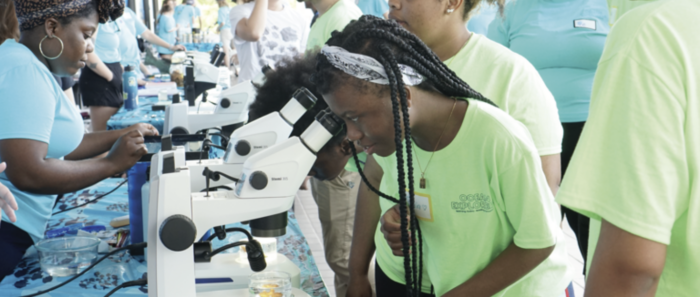
Photo credit: University of Miami Rosenstiel School of Marine and Atmospheric Science

18
DEIA ocean exploration projects funded

$415, 419
total amount granted
2,316 K-12 students, 113 college students, and 200 educators reached
“Without the Ocean Exploration Education Mini-Grant through NOAA and [the Foundation], none of this would have been possible. I would never have seen giant rocky outcrops or fault lines that run for kilometers. I wouldn’t have had the opportunity to witness the ways scientists with different specialties and backgrounds work together and to be a part of that science. ”
Nikki Fuller,
Undergraduate student participant at SUNY Geneseo
AS A SOURCE for solutions, we provide strategic funding in national marine sanctuaries to nurture the best ideas possible to protect our ocean and Great Lakes.
• Solutions against existential threats of climate change, biodiversity loss, and systemic inequality
• Blue Economy drivers and economic opportunity
• Living laboratories for ecological protection and restoration, and cultural preservation
• Programs providing inspiration and education to fight for a healthy ocean and Great Lakes
• Capacity enabling sanctuaries to reach everyone
• Maritime heritage projects that unite Americans and reduce partisanship
• Programs that increase equitable access to nature and its benefits
OUR WATERSHED MOMENTS
For more than two decades, Capitol Hill Ocean Week (CHOW) stands as the nation’s premier annual conference examining current marine, coastal, and Great Lakes policy issues. CHOW 2023: Ocean x Climate explored how we can make ocean conservation part of climate strategies and nationally determined contributions to address climate change. It was the highest attended and registered CHOW ever, with 2,637 people registered for the event. Learn more.
Get Into Your Sanctuary is an annual celebration in July and August as a way to showcase the beauty and wonder of sanctuaries and all the opportunities they offer for recreation and tourism. From kayaking to fishing to whale watching, the majority of national marine sanctuaries’ waters are open to compatible and sustainable recreational activities that generate considerable benefits for local economies and communities. Learn more.
In 2023, the Foundation launched the first National Marine Sanctuary Day, a national day of celebration of our protected waters in the ocean and Great Lakes that hold America’s shared maritime and ecological heritage.. The stories shared from throughout the National Marine Sanctuary System show that conservation, economic prosperity, and human well-being are deeply woven together in our national character. Learn more.
The Blue Beacon Series aims to bring to light the ocean and Great Lakes’ biggest challenges through panels, lectures, and film screenings hosted around the country in order to build communities of support for marine protected areas. Events in 2023 centered on regenerative tourism in the Florida Keys, community-based conservation in Hawai’i, and kelp aquaculture in Maine. Learn more.
We extend our thanks to the many funders who support our work in these areas,
including NOAA and the federal government, foundations and private donors.
BOARD OF TRUSTEES
Susanna Kondracki, Co-Chair
Mark McDade, Co-Chair
Jose Astorqui
Barbara Birdsey
Elizabeth Crego
Gary Demasi
Dr. Justin Dunnavant
Josh Franklin
Heather Ludemann
Ilarion Merculieff
Dane Nichols
Jody Ng
Martin Peters
Dawn Rodney
John Rudolf
Lynn Scarlett
Laura Zagar
John Armor, Ex-officio
Joel R. Johnson, Ex-officio
OUR LEADERSHIP TEAM
Joel R. Johnson, President and CEO
Allison Alexander, Vice President, Program Operations
Shannon Colbert, Vice President, External Affairs
Veronica Ali, Vice President, Finance
Chip Weiskotten, Director of Strategic Communications
Tj Tate, Director of Conservation
Ginaia Kelly, Director, Monterey Bay Chapter
2022 FINANCIAL SNAPSHOT
Total revenue 14,569,289
Total expenses 16,758,489
Net assets at beginning of year 8,029,815
Net assets at end of year 5,840,615
Change in net assets (2,189,200)
REVENUE BREAKDOWN
TOTAL $14,569,289
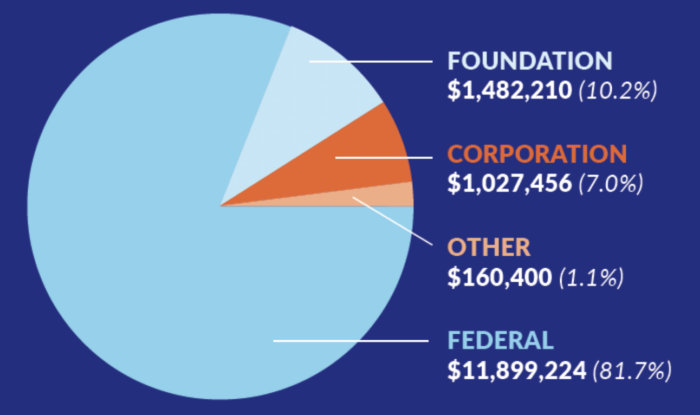
EXPENSES BREAKDOWN
TOTAL $16,758,489
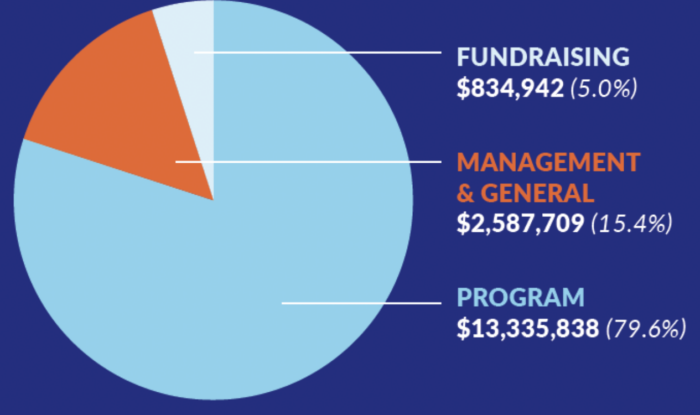
* Audited financial information for FY2023 will be available in Q2 of 2024
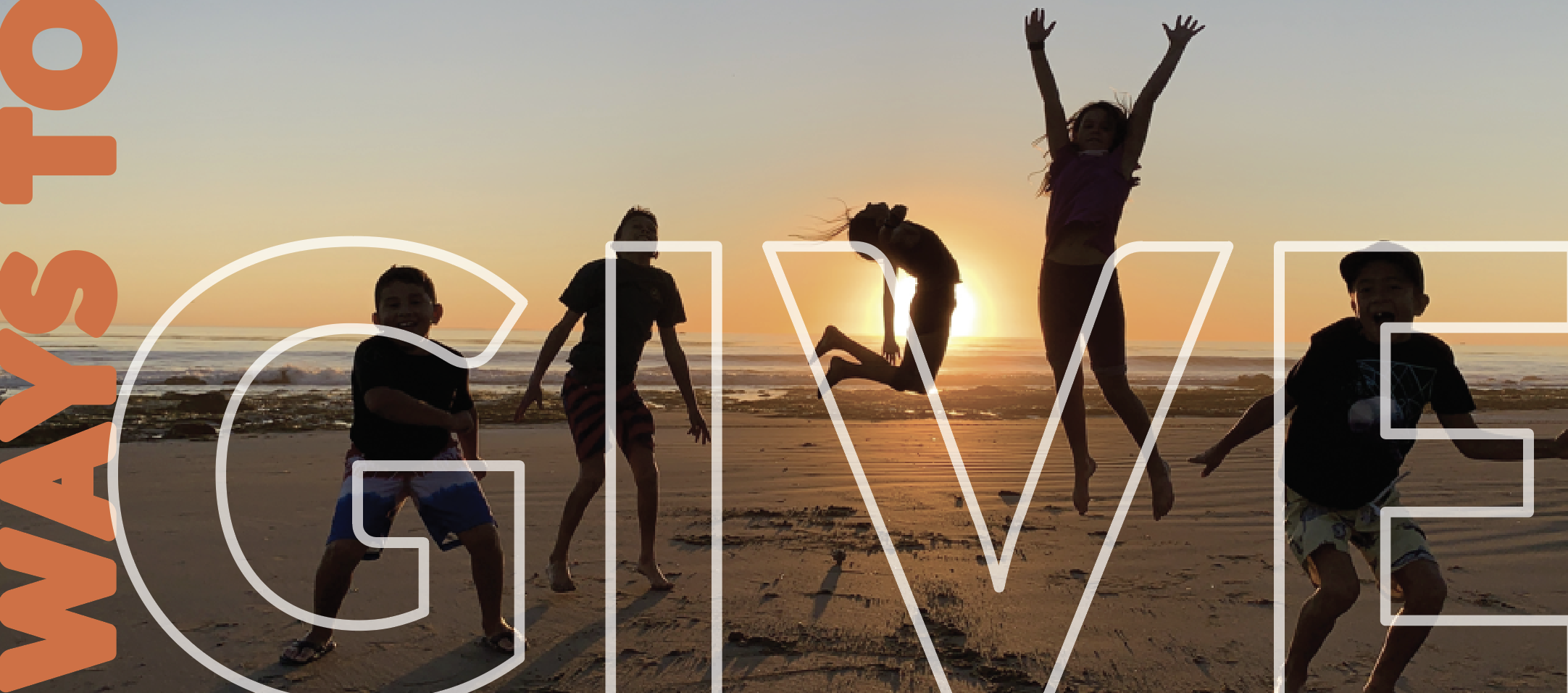
Support the Foundation and Our Sanctuaries
At the National Marine Sanctuary Foundation, we believe that protecting our ocean, coasts, and Great Lakes is not just a responsibility but a collective privilege.
By donating today, you become integral to our commitment to safeguard species and their habitats, conserve America’s maritime history, and ensure a thriving and resilient ocean, coasts, and Great Lakes. With your generosity, we can protect and expand national marine sanctuaries, improving the health of marine ecosystems and, by extension, our planet. Together, we can build a future where marine life thrives, our coasts flourish, and our ocean remains a source of wonder and inspiration for all.
Make a lasting impact on the future of our ocean, coasts, and Great Lakes.
Support Our Sanctuaries
SCAN TO DONATE

TEXT TO DONATE
 Text WAVES to 44-321
Text WAVES to 44-321
DONATE BY MAIL

National Marine Sanctuary Foundation
Attn: Development
8455 Colesville Rd.,
Suite 1275 Silver Spring, MD 20910

